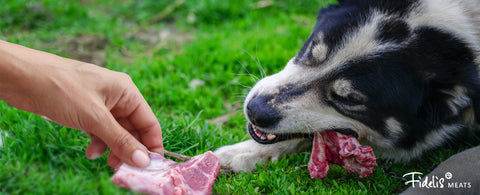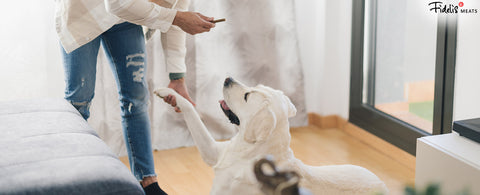|
Raw diets have been found to be extremely beneficial to your pets, but many pet owners are still hesitant to switch their furry friends to raw food because it seems to be more difficult to prepare and store than dry kibbles. Handling raw dog or cat food is, in fact, similar to handling raw human food. With proper procedures, food remains safe for consumption. Whether you’ve already decided to feed raw or are still thinking about it, here’s a quick guide to handling and storing your pet’s raw food. Learn more: Raw Dog Food: Why Should You Feed Your Dog Raw Food? 1. Store Raw Food in the Freezer Bacteria can easily multiply when raw food is left at the incorrect temperature for long periods of time. Although dogs and cats have acidic stomachs that handle these bacteria, large quantities of them can still be harmful to your pets’ health. Storing raw foods in the freezer at temperatures between -18°C and -22°C will be the most ideal and safe form of storage. Pet owners should also pay attention to the storage materials used for extra caution. For example, certain materials such as plastic containers crack easily and may allow cross contamination. You may wish to utilise metal or glass containers instead. 2. Thaw in the Refrigerator Although freezing raw food keeps them safe, it does not kill bacteria. Bacteria is still present on frozen food and can begin to reproduce again once thawing starts. Hence, we recommend thawing all frozen raw food in the refrigerator, kept at between 0℃ and 4℃. This prevents bacteria from growing. 3. Do Not Refreeze After Thawing Thawing refrozen food breaks down more cells and alters the product integrity. This affects taste and texture and is the primary reason why most of us have the idea that we cannot refreeze food. At Fidelis Meats, we have portion sizes ranging from 150g to 300g packs in 50g increments so there will always be a correct portion that is suitable for your dog. For our patties for cats, they are available in portions of 80gx2 and 320g packs. 4. Avoid Touching Raw Food with Bare Hands Always wash your hands with hot soapy water before and after handling your pet’s raw food and wear a pair of gloves. This is to avoid contaminating your own food and kitchen surfaces as well. 5. Keep Raw Food Away from Sun and Heat When in contact with the sun and heat, raw dog and cat food can reach dangerous temperature zones quickly and allow bacteria to multiply even faster. In a tropical climate like Singapore, it is advisable not to leave the food out in the open for more than 10 minutes at a time. 6. Thoroughly Clean Utensils and Bowls with Hot Soapy Water Bacteria can live in your pet’s food bowls and on the utensils you’ve used to prepare them. One of the best ways to eliminate them is to scrub each item with hot soapy water or place them in the dishwasher and let the hot water disinfect them to keep them clean and prevent contamination. 7. Use Dedicated Utensils for Your Pet’s Food Raw meat that is not handled properly may contain bacterial foodborne pathogens that can cause serious infection and/or food poisoning in humans. Although a rare occurrence, it is recommended to always prepare raw dog or cat food with dedicated utensils and store them separately from the cutlery you use. Your pet’s food should also be kept separate from human food. Safe hygiene practices are the most effective way to ensure safety for everyone at home. Extra care should be taken especially if there are young or elderly at home. Handling raw dog and cat food with caution is important not only for your pet’s health, but also for your own safety. These rules are also simple to follow. Fidelis Meats is Singapore’s first butchery dedicated to pets. Want to switch your dog or cat to a raw diet? Get your raw pet food online today. |


